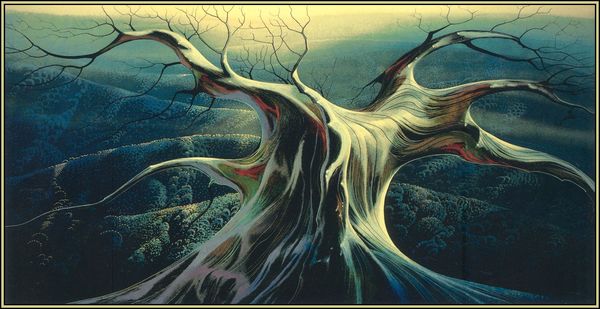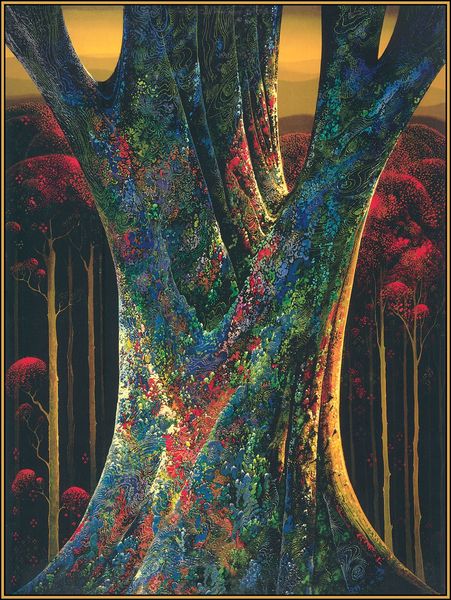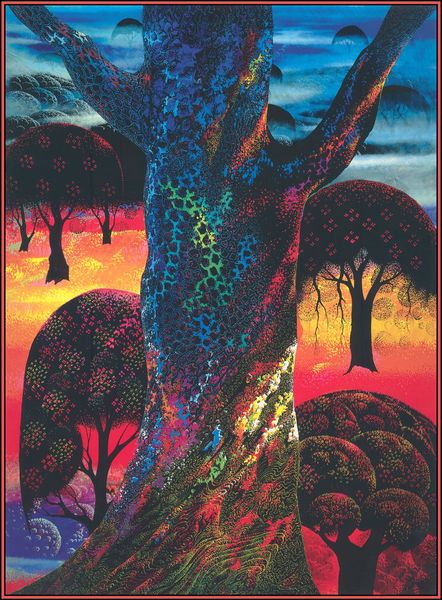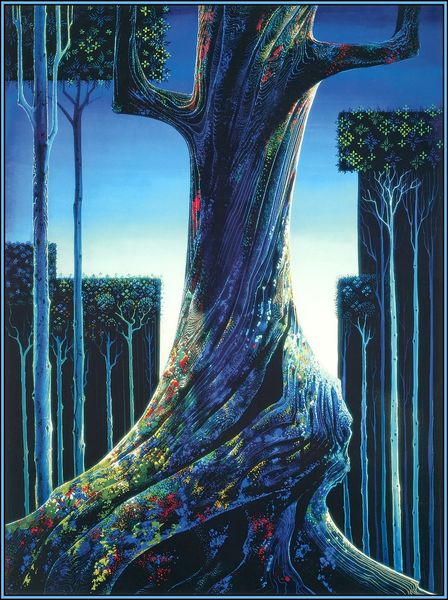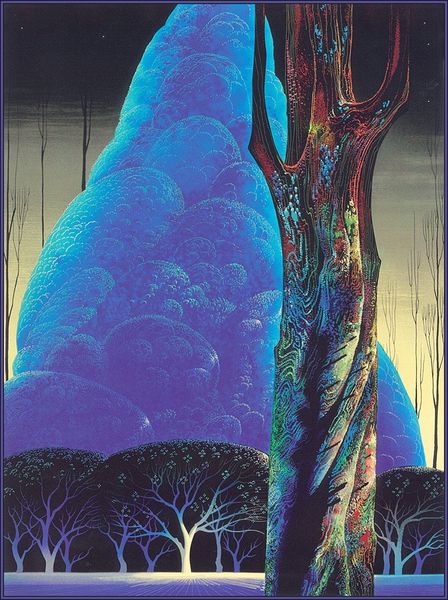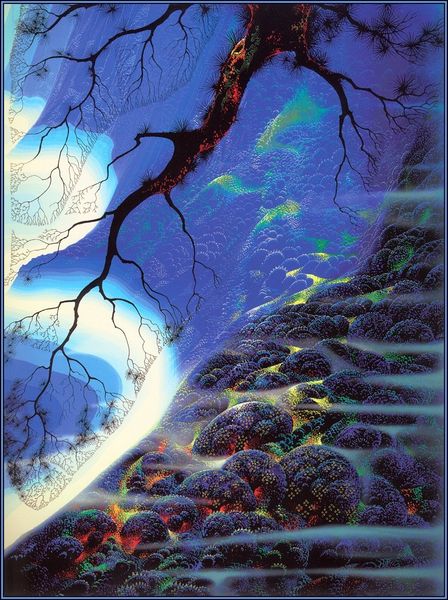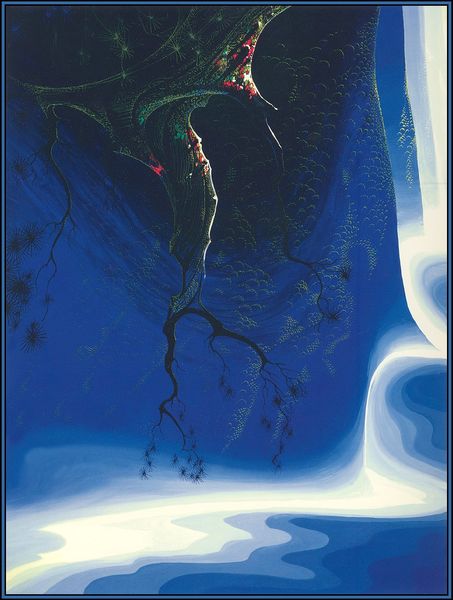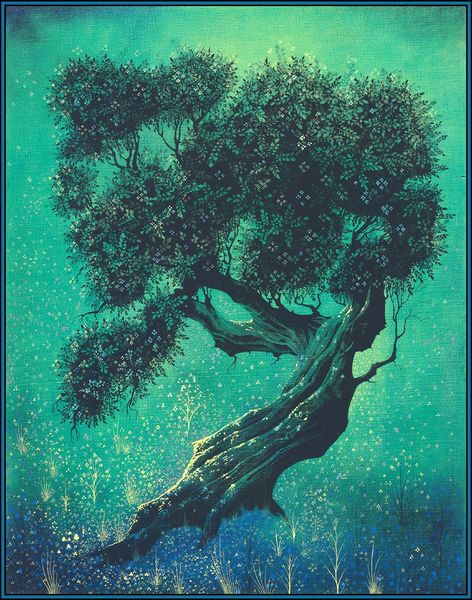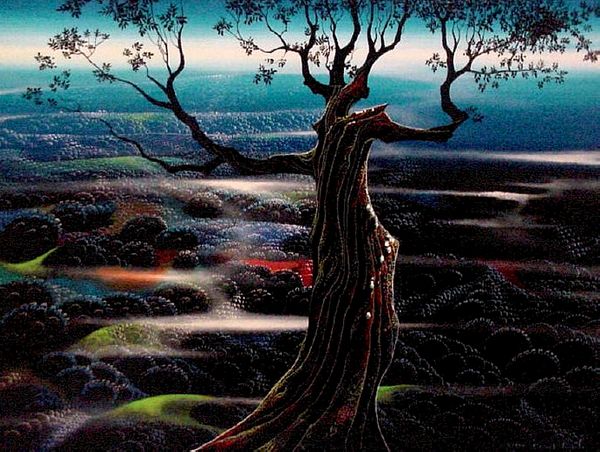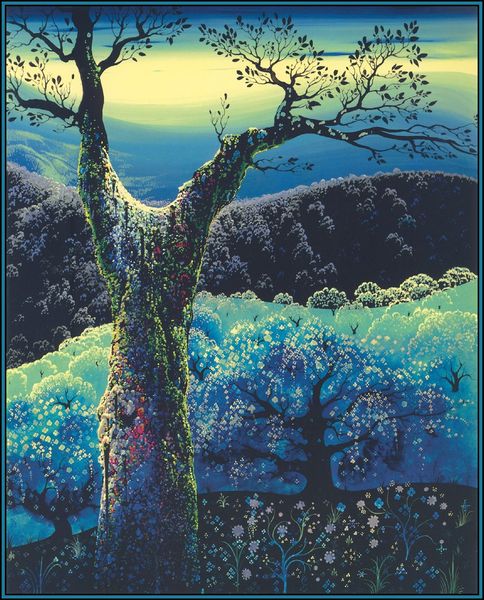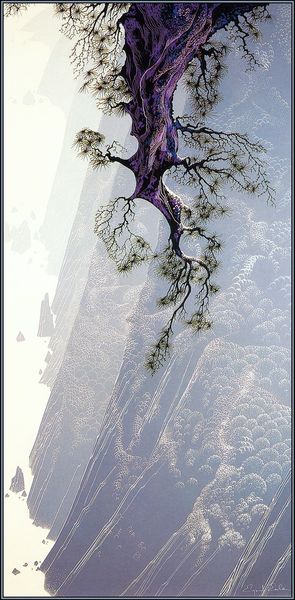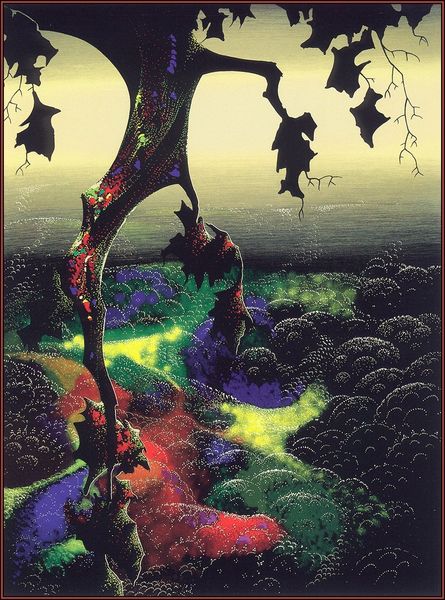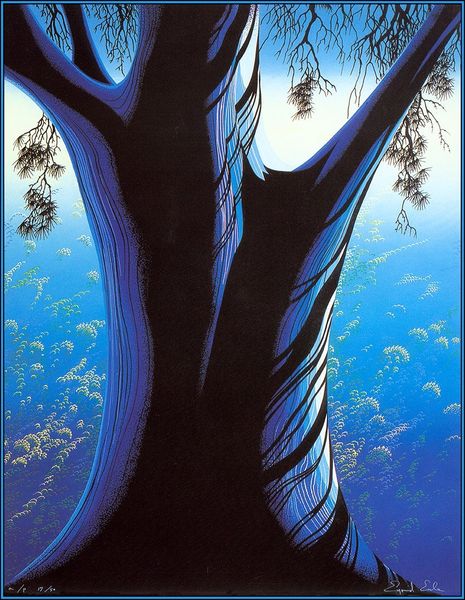
painting, acrylic-paint
#
abstract expressionism
#
painting
#
landscape
#
acrylic-paint
#
figuration
#
folk-art
#
abstraction
#
abstract art
Copyright: Eyvind Earle,Fair Use
Curator: Here we have "The Great Jewel Tree," a vibrant painting by Eyvind Earle. The medium used looks to be acrylic. What strikes you first about it? Editor: The intensity. It's almost hallucinatory. The exaggerated color palette transforms the familiar landscape into something otherworldly. The patterns and textures pull me right in! Curator: Earle was quite meticulous in his process. Think of the layers of acrylic he used to build up those surfaces. It challenges our usual notions of landscape painting; it’s so precisely executed, and yet ventures into abstraction. Editor: Absolutely. Consider how these paintings are shown – in galleries, printed in books, posters… there's a deliberate effort to popularize Earle's unique vision. It fits into that mid-century California aesthetic that so many designers adopted in their work, and those illustrators such as Mary Blair... Curator: The means of production are interesting here, too. The initial concept could have been quickly sketched, but the labor-intensive process, layer upon layer of color, makes me wonder about the cultural values being reflected during its creation. There's a dialogue between quick consumption and painstakingly handcrafted methods. Editor: I agree. There's a constant negotiation, isn't there? The art world values innovation but also history. Museums and collectors want objects that stand out but that also fit comfortably into established canons, in addition to art that sparks popular interest, of course! This kind of vivid imagery always seems to do well in public imagination. Curator: Yes, Earle seems conscious of those different contexts. He is creating landscapes but with heightened artifice, acknowledging his interventions, his hand. What’s created becomes so obviously made by someone in their workshop. The “landscape” comes almost second. Editor: In the end, for me, the staying power here speaks to the ability of a compelling image to find its place, no matter how surreal, and insert itself into how we envision the natural world. Curator: Yes, considering the detailed labor here reframes our experience with the final image, revealing subtle ways of how it invites engagement with popular cultural history and, naturally, its creation process.
Comments
No comments
Be the first to comment and join the conversation on the ultimate creative platform.
